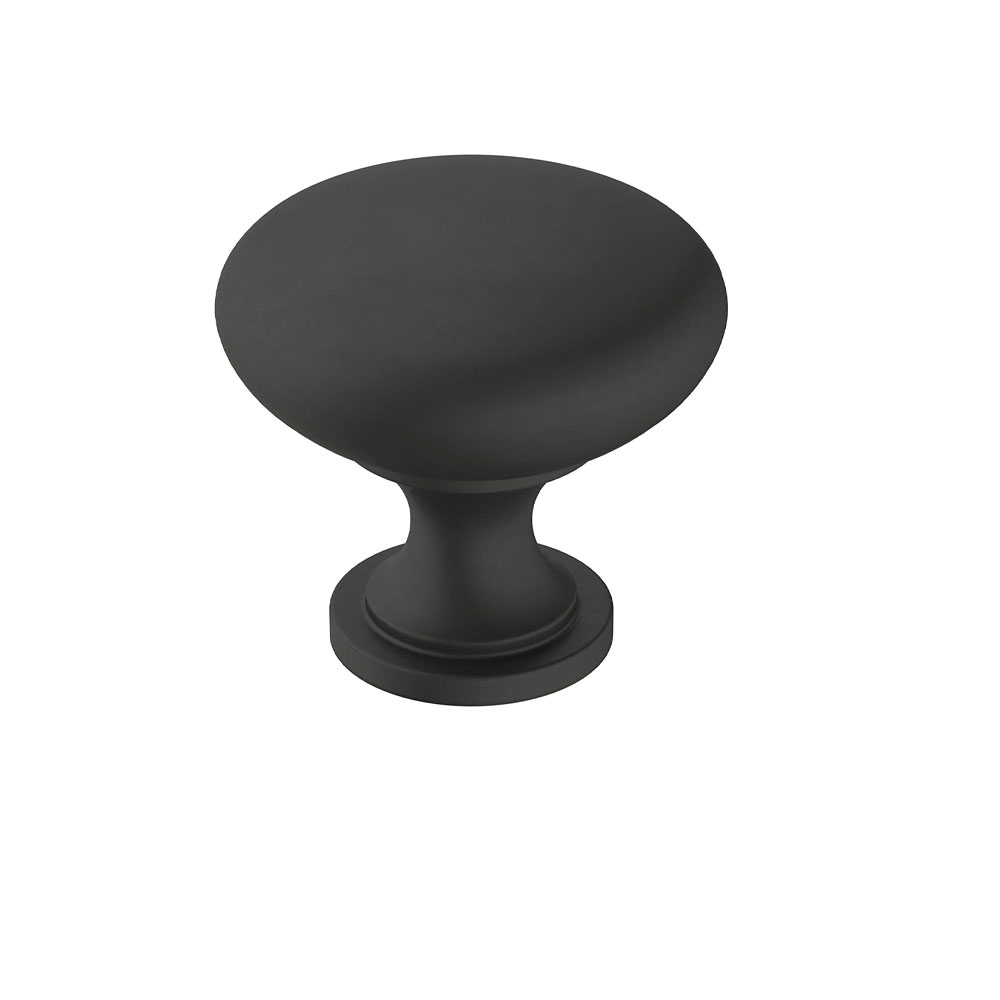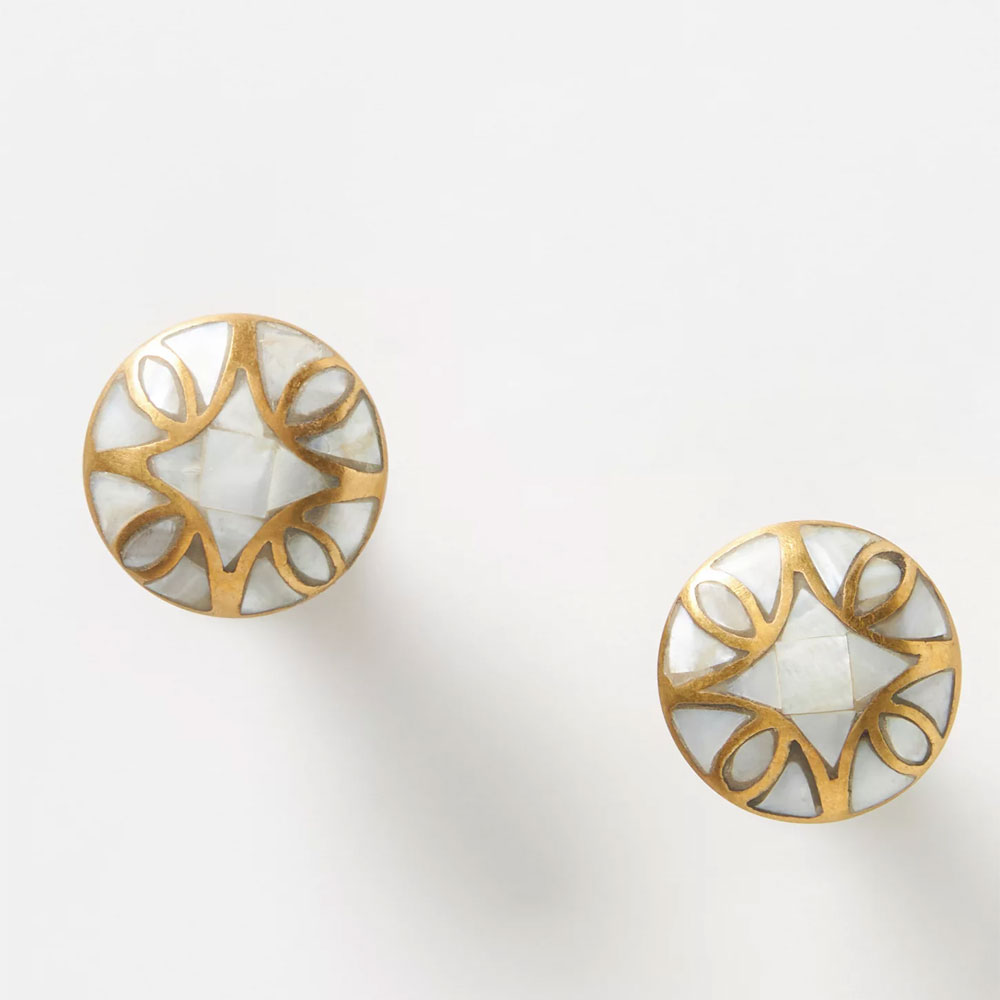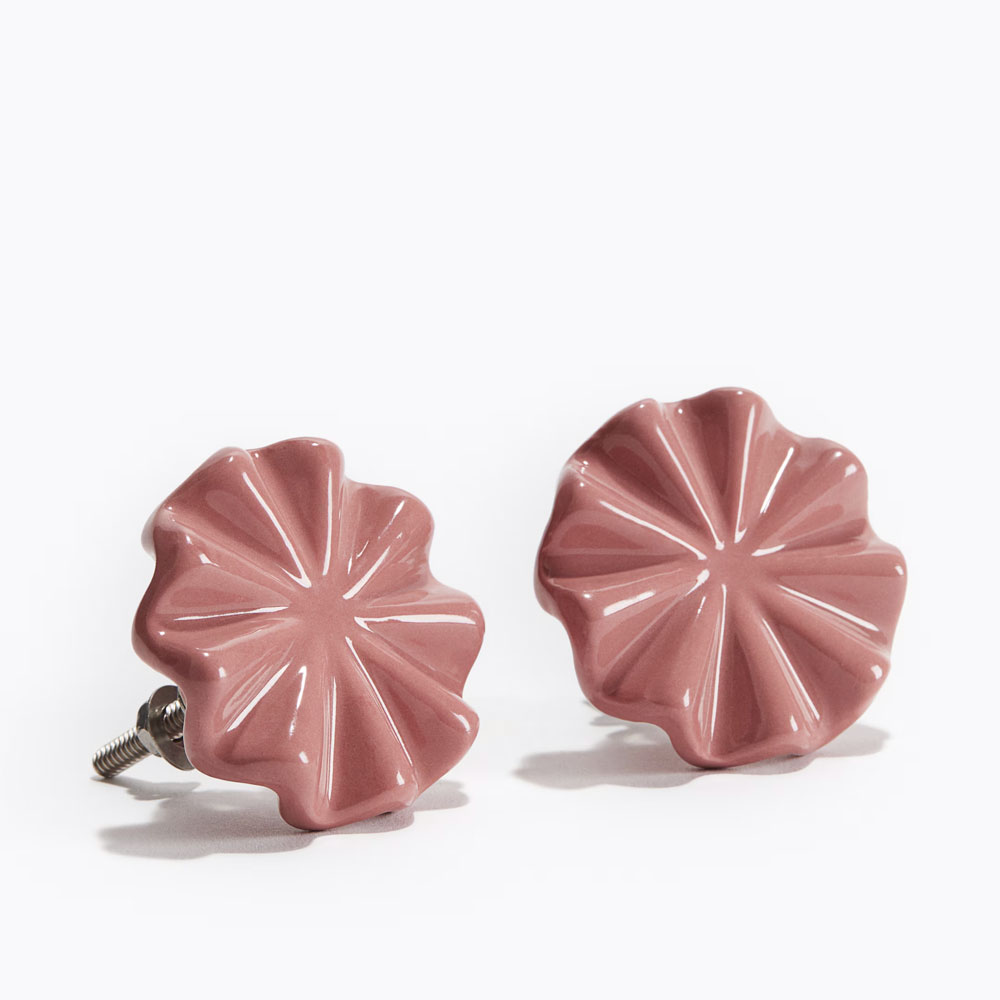It's What's on the Outside That Counts — Here's How to Choose Your Closet Materials Wisely
You choice of finish plays a role in not just the aesthetics, but the maintenance required, the longevity of the design, and, crucially, how much it will cost
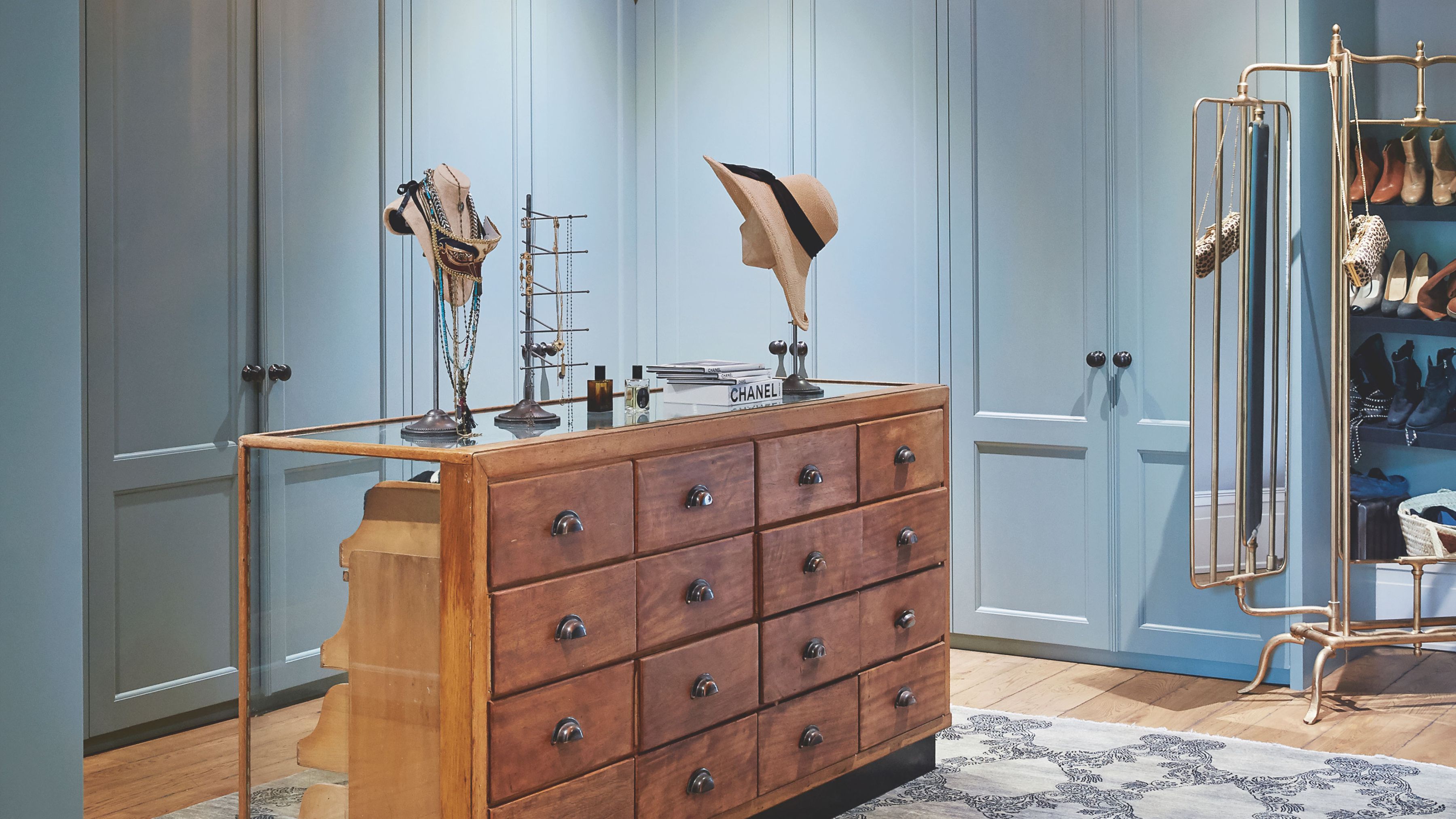

The design of your closet will be shaped by a number of things, including its size, layout, the configuration you choose for the hanging rails, shelving, and drawers, and, of course, the materials it is constructed from.
There is a huge range of closet materials available — from those designed to give your storage space a high-end, luxury feel, to finishes that are super practical or more achievable on a budget.
To help you make the right choice and ensure your built-in closet ideas turn out just as you'd hoped, we asked the experts for their insight and compiled the guide below, which details the pros and cons of the most popular closet materials out there.
Core Closet Materials
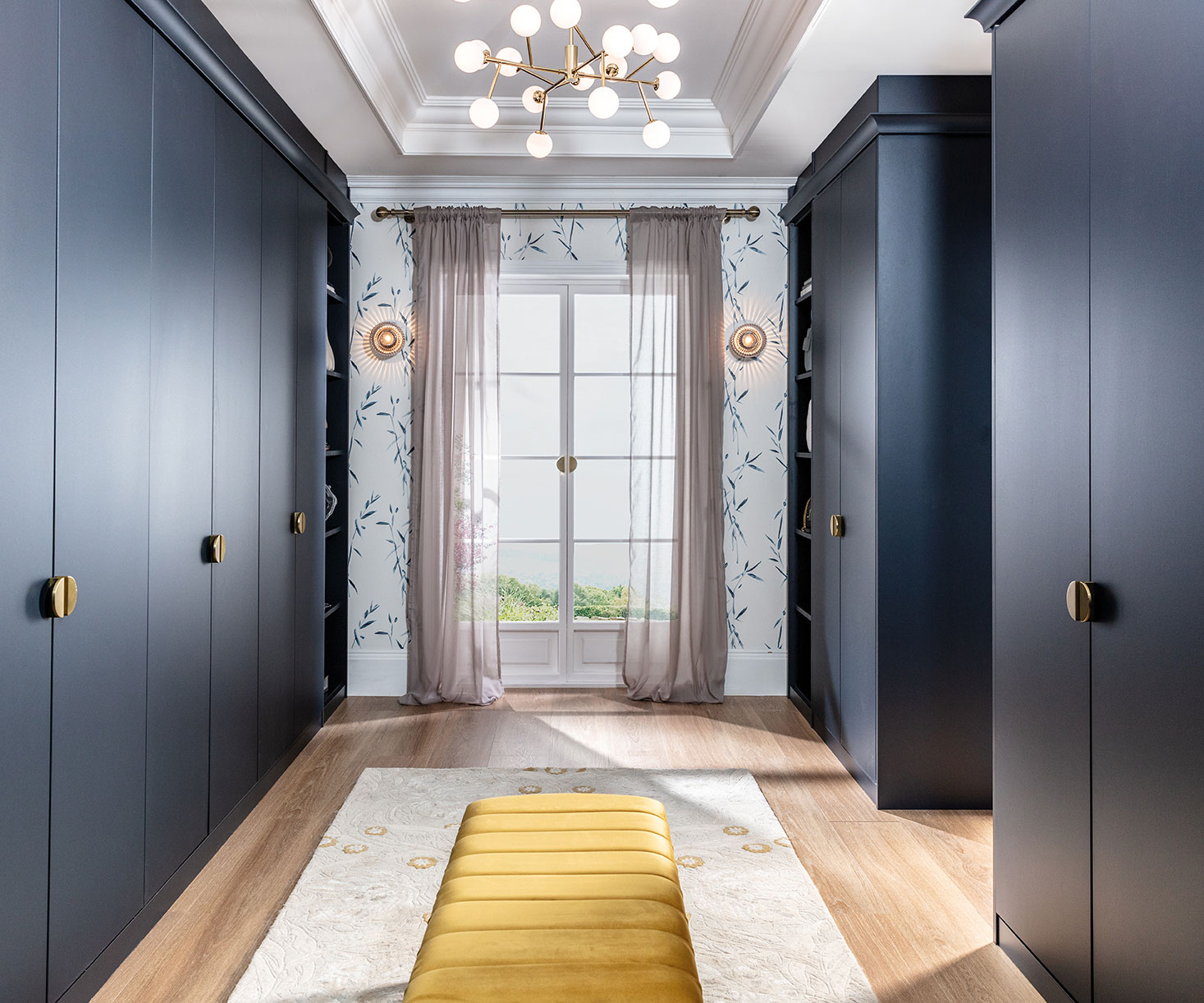
In terms of the materials that make up the structure of the closet itself — as opposed to what's on the surface of your closet shelving and doors — the choice tends to come down to MDF (medium density fiberboard), particleboard, plywood, and solid wood.
While MDF, particleboard, and plywood can all be finished with a range of materials (which we'll discuss in depth below), solid wood has less of a need for a face material, as it looks beautiful when left natural.
The Pros and Cons of Different Closet Materials
Melamine
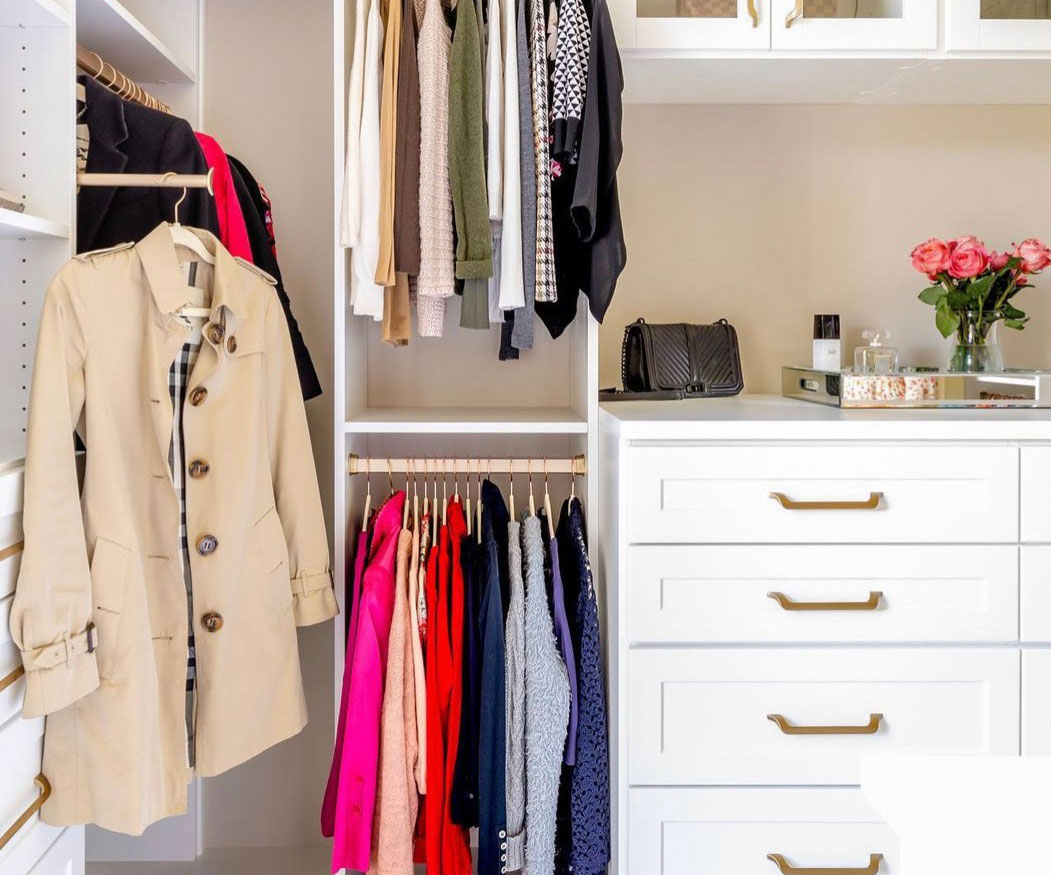
PROS
Melamine is a popular finishing material for closets for several reasons — but the main one is its cost. "Melamine is great for a budget-friendly choice," says Alice Moszczynski interior designer at Planner 5D. "It’s affordable, comes in a wide variety of colors and finishes, and is easy to maintain."
"Melamine closets essentially have a type of plastic resin layered over the base material, usually MDF or particleboard," explains Bradley Montanez, the founder of Californian homewares brand, TableUps. "This provides a smooth, easy-to-clean surface. Colors and finishes also run the gamut, from bright whites to darker tones, even actual wood grain patterns that look more like real wood."
CONS
That said, despite its ability to durable and affordable designs, melamine won't be the right choice for everyone — particularly if you're looking for luxury closet ideas.
"It's more durable, but not as high-end as natural wood," says Bradley. "It may also chip or scratch if handled poorly. It's best used in utility closets, guest rooms, or anywhere you need function more than fashion."
Veneer
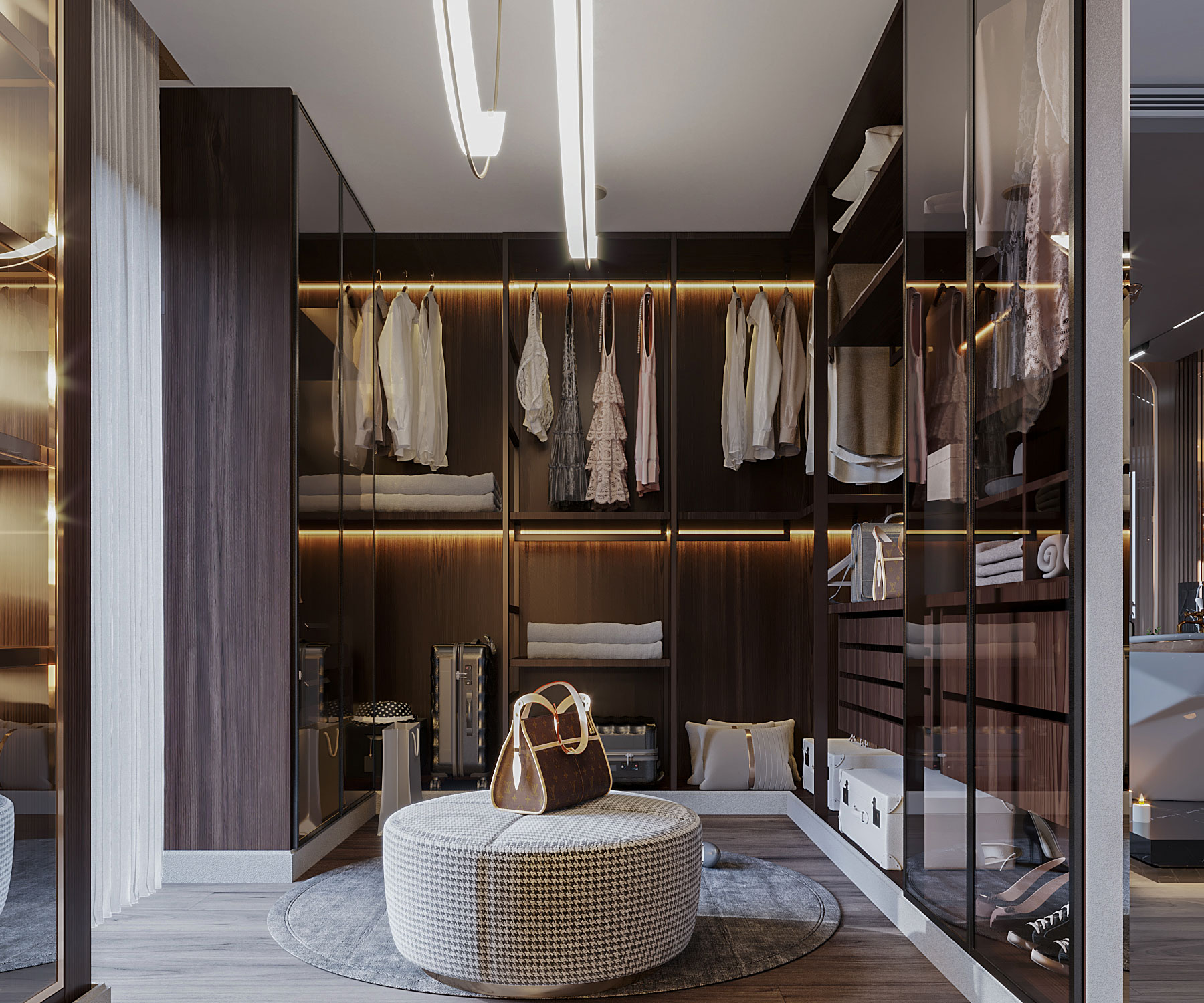
PROS
Veneer is another widely used material for closet shelving and closet islands, offering something of a compromise between melamine and solid wood. It's made by layering a thin veneer of real wood over a cheaper base material, offering aesthetic appeal with added durability, explains Bradley. "It's also less expensive than solid wood and comes in a variety of wood species, allowing for greater design flexibility," he adds.
Alice Moszczynski says she would opt for the veneer of melamine. "It has a more luxurious appearance, similar to solid wood but at a lower cost, and it’s versatile, with various wood species and finishes available."
CONS
But, of course, there are also some downsides that you should be aware of if you are considering veneer for your closet. "It might be a bit more susceptible to water damage, and it can be a little high-maintenance if you want to keep it looking at its finest," says Bradley. "Plus, it doesn't carry the exact depth and texture as solid wood, though it closely resembles it."
"Veneer can peel over time if not applied correctly," adds Alice. "It also requires more care to maintain its looks."
That said, a veneer is a brilliant option for all kinds of closets, including as a walk-in closet idea where you want an opulent look without spending too much.
Solid wood
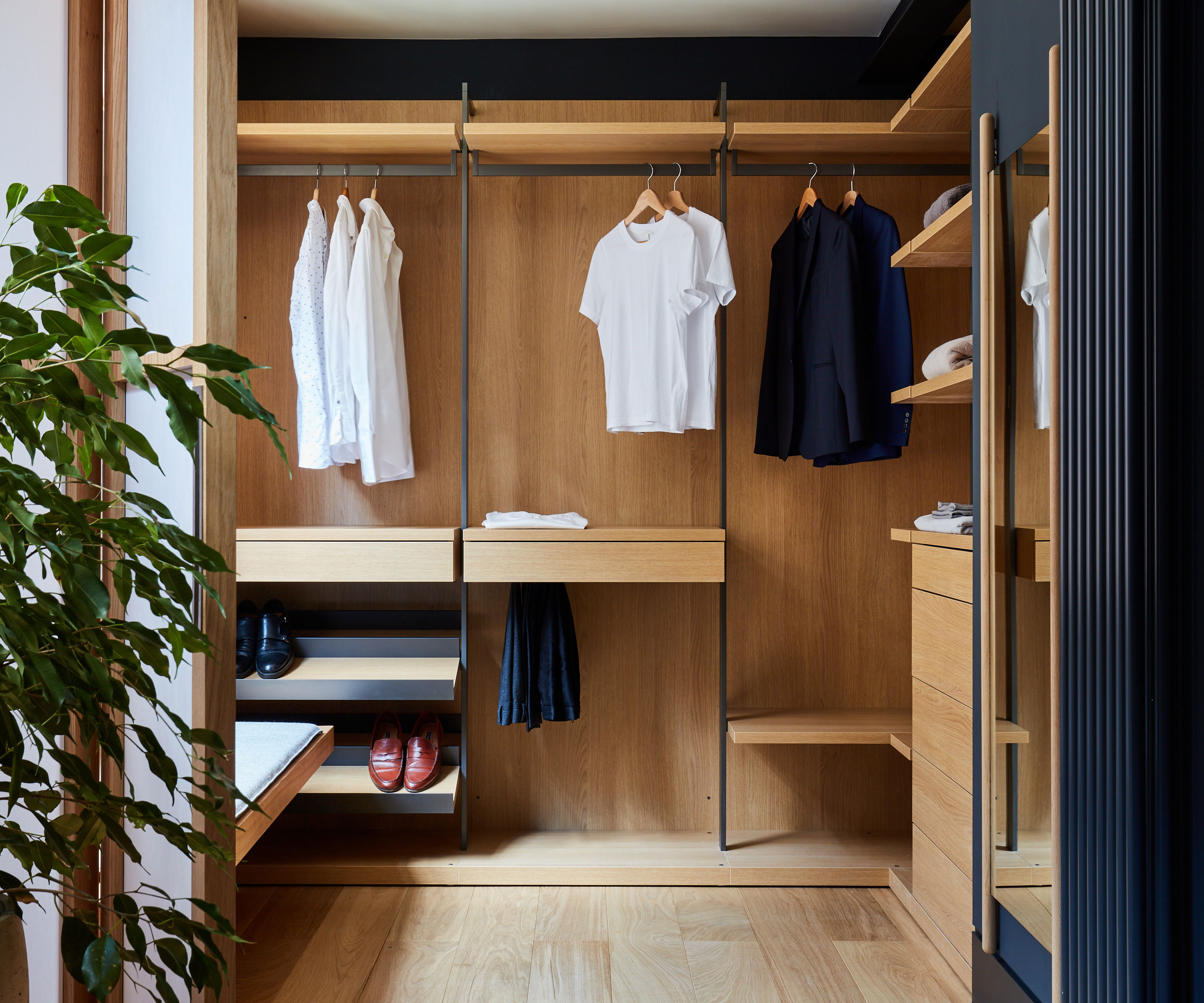
PROS
For a real high-end look and a space you'll want to show off, solid wood is a popular closet material you should strongly consider. "For anyone who relishes in luxury and durability, solid wood is the gold standard," says Bradley. "It brings warmth, character, and lasting quality into your home."
Not only that, but it offers unparalleled durability, a natural aesthetic, and timeless appeal that will likely even add value to your home, he adds. "It's also possible to achieve your perfect color scheme with solid wood by staining or painting it. Solid wood can also be refinished if it ever shows wear and tear over time."
CONS
But while solid wood may well be the material of choice for many homeowners and interior designers, solid wood is not without its disadvantages. "It’s the most expensive and requires regular maintenance to keep it in good shape," explains Alice Moszczynski.
"The price of solid wood by far outweighs other material prices," adds Bradley. "Plus it's heavier and requires more care, mainly when it comes to high humidity areas that may cause it to warp or expand."
Glass
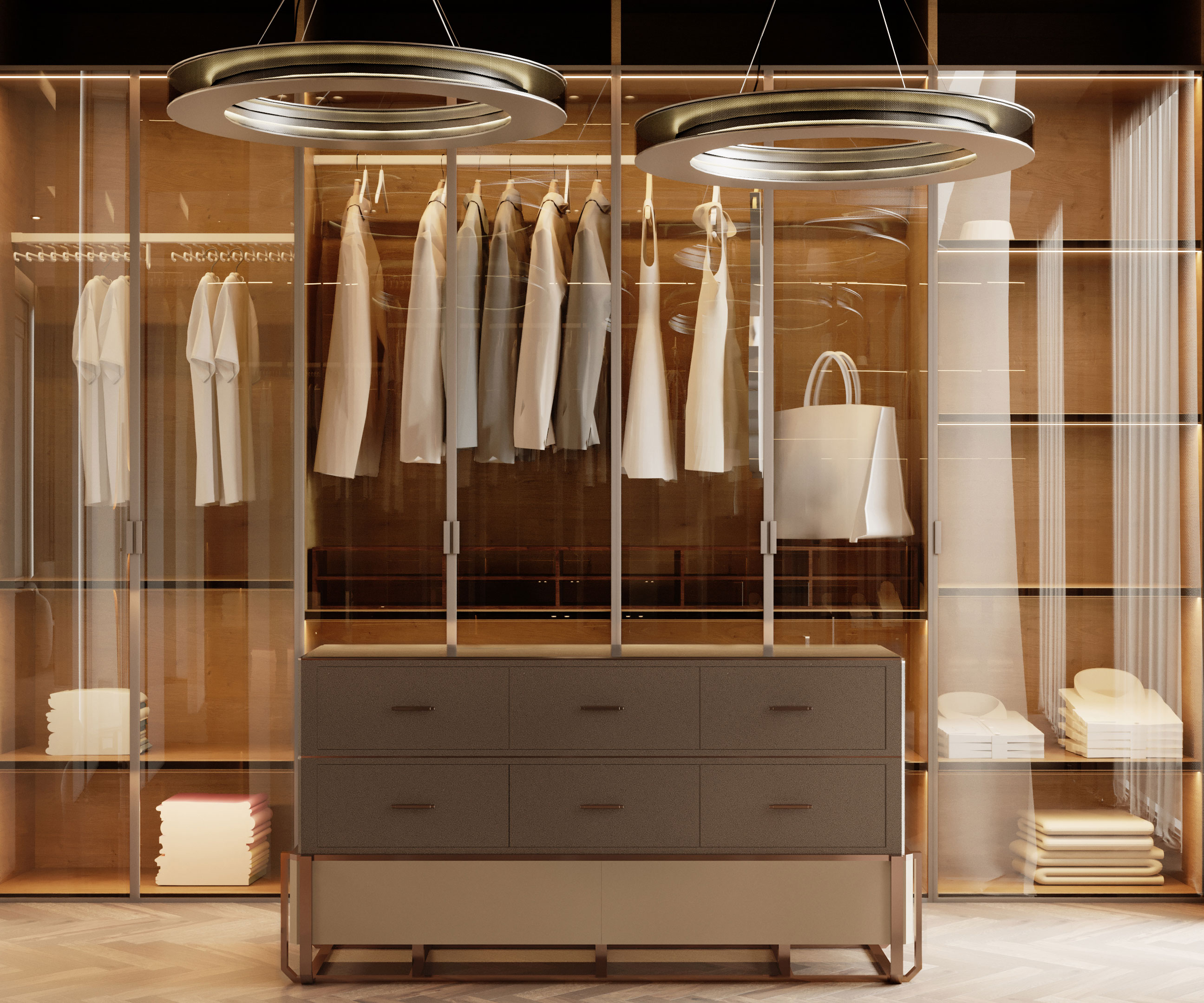
PROS
For a beautiful, boutique look in your closet, glass shelving and closet doors should be a go-to. Even just one or two glass-fronted units can make all the difference to the look and feel of the space.
Another bonus of using glass is that it opens up all kinds of closet lighting possibilities which add depth and interest to the room, as well as making it easier to find what you are looking for. Consider something like these Govee LED strip lights ($14.99 from Amazon) concealed within the closet to really elevate the space.
CONS
Bear in mind that a smart and elegant finish with glass closets is only possible if you are displaying tidy stacks and well-organized items. The whole look is going to be instantly ruined if all you can see through the glass is a messy jumble of clothes, so you'll need to find some handy closet organization ideas before committing.
Similarly, glass will be likely to show smudges and fingerprints (especially if it's backlit) so you'll want to make sure you're ready to commit to keeping it tidy.
A Mix of Materials
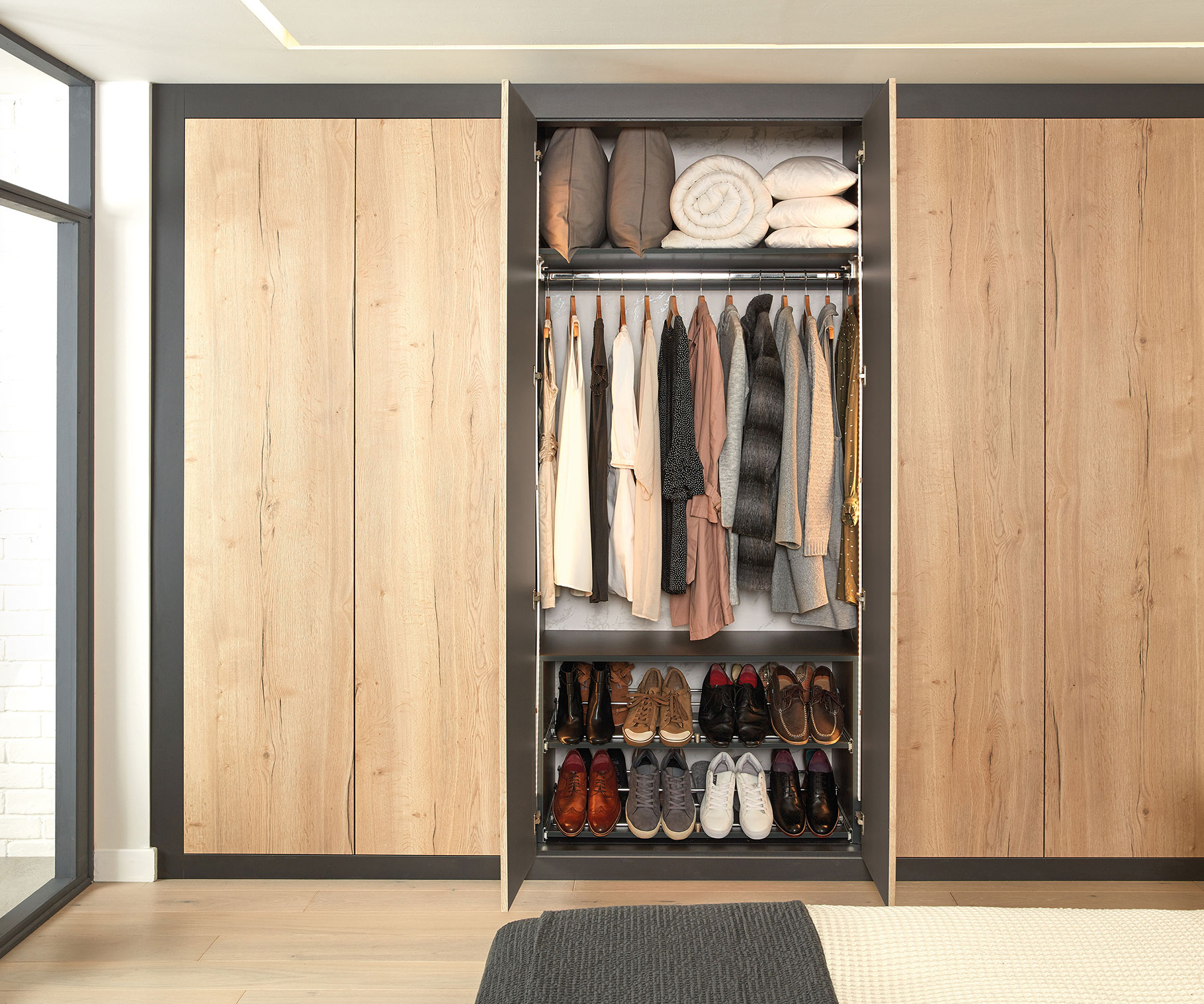
There is absolutely nothing in the closet design rulebook that says you can't mix and match different materials. In fact, doing so is likely to result in a far more elevated, individual, and thoughtful scheme.
Solid wood and glass are the perfect combination for those after the ultimate in style, but if you are keeping an eye on costs, bringing higher-end materials together with those that are more affordable is a wise idea.
"Consider using a mixture of melamine and veneer to balance costs," suggests Bradley. "You might put melamine on interior shelving and get veneer or solid wood for the doors and drawers, where it will be more visible."
FAQs
How can you make MDF closets look more expensive?
MDF is a popular option across all kinds of storage furniture. It is structurally sound and a far more affordable option. However, it requires the right treatment if you want to make your bedroom storage look more expensive and add something to the scheme in terms of aesthetics.
"For a cost-effective option that still looks awesome, I like MDF with high-pressure laminate," says Alice. "It’s more affordable than solid wood, stable, and can be customized."
"Hardware, trim, or paint that you apply yourself will give a less-expensive material a higher-end look without adding a huge amount to the cost," adds Bradley.
Sometimes, something as simple as updating your hardware can instantly elevate even the most basic of closet materials.
Be The First To Know
The Livingetc newsletters are your inside source for what’s shaping interiors now - and what’s next. Discover trend forecasts, smart style ideas, and curated shopping inspiration that brings design to life. Subscribe today and stay ahead of the curve.
Natasha Brinsmead is a freelance homes and interiors journalist with over 20 years experience in the field. As former Associate Editor of Homebuilding & Renovating magazine, Natasha has researched and written about everything from how to design a new kitchen from scratch to knocking down walls safely, from how to lay flooring to how to insulate an old house. She has carried out a number of renovation projects of her own on a DIY basis and is currently on the lookout for her next project.
-
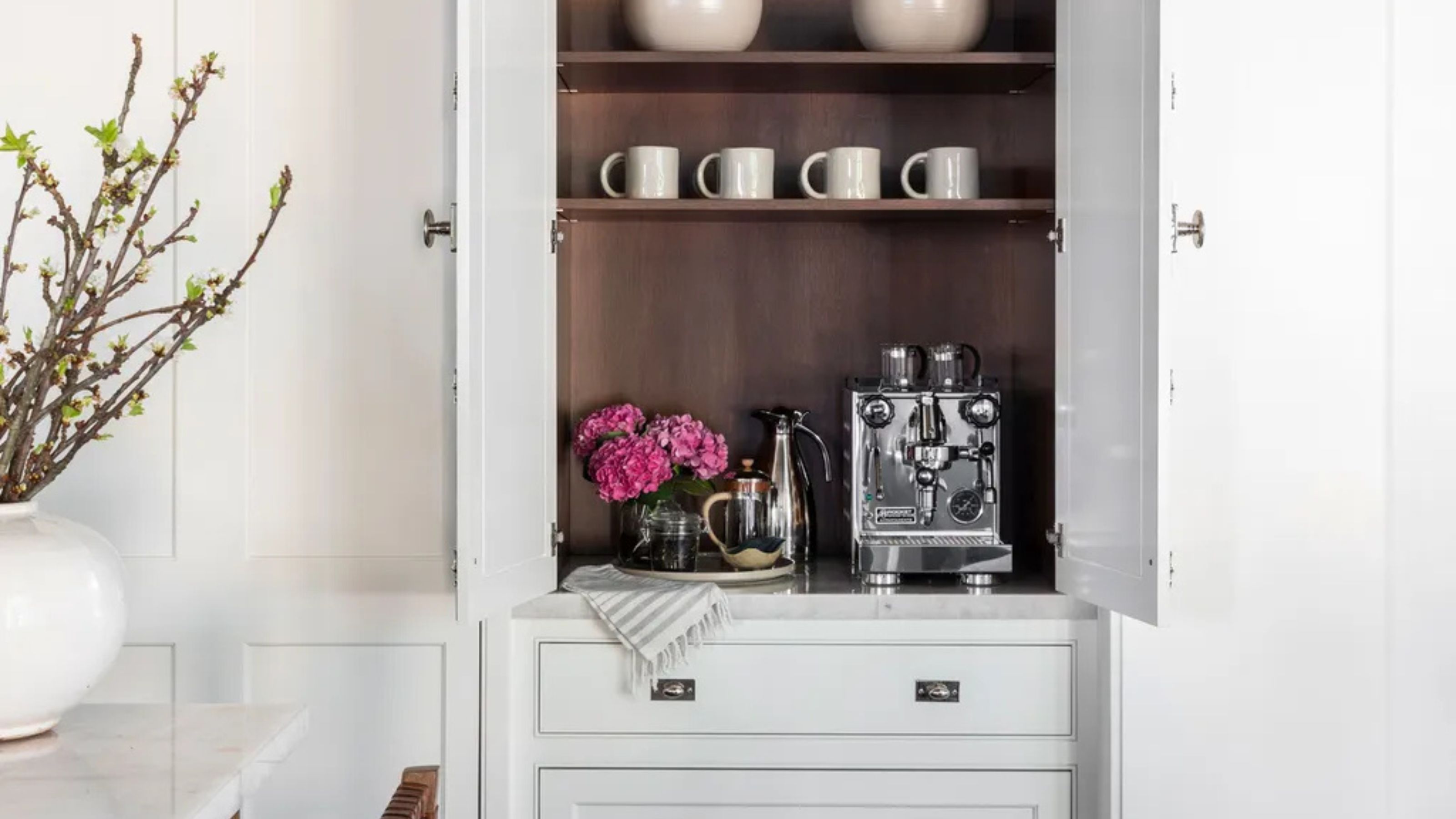 Turns Out the Coolest New Café is Actually In Your Kitchen — Here's How to Steal the Style of TikTok's Latest Trend
Turns Out the Coolest New Café is Actually In Your Kitchen — Here's How to Steal the Style of TikTok's Latest TrendGoodbye, over-priced lattes. Hello, home-brewed coffee with friends. TikTok's 'Home Cafe' trend brings stylish cafe culture into the comfort of your own home
By Devin Toolen Published
-
 5 Bathroom Layouts That Look Dated in 2025 — Plus the Alternatives Designers Use Instead for a More Contemporary Space
5 Bathroom Layouts That Look Dated in 2025 — Plus the Alternatives Designers Use Instead for a More Contemporary SpaceFor a bathroom that feels in line with the times, avoid these layouts and be more intentional with the placement and positioning of your features and fixtures
By Lilith Hudson Published
